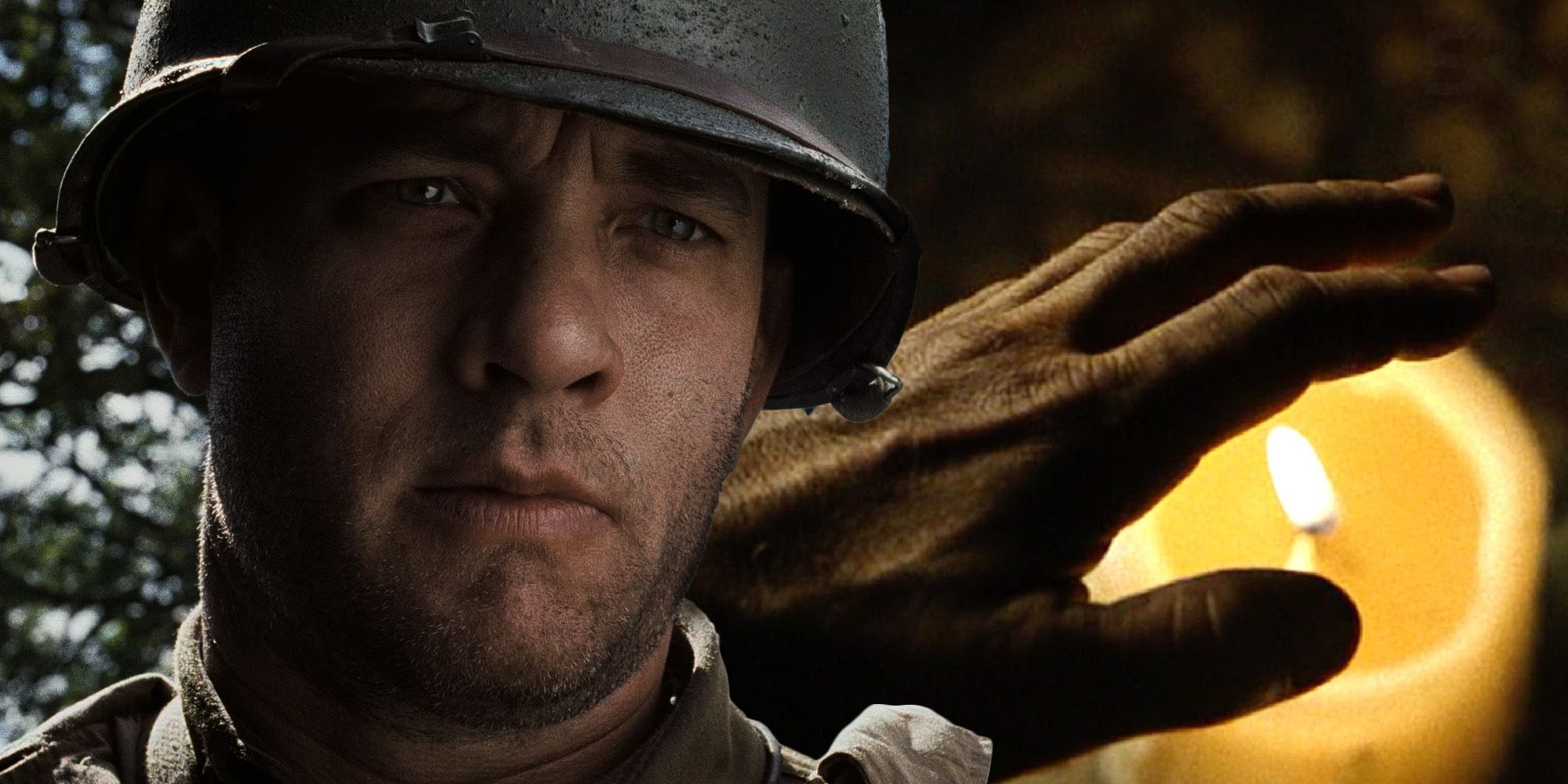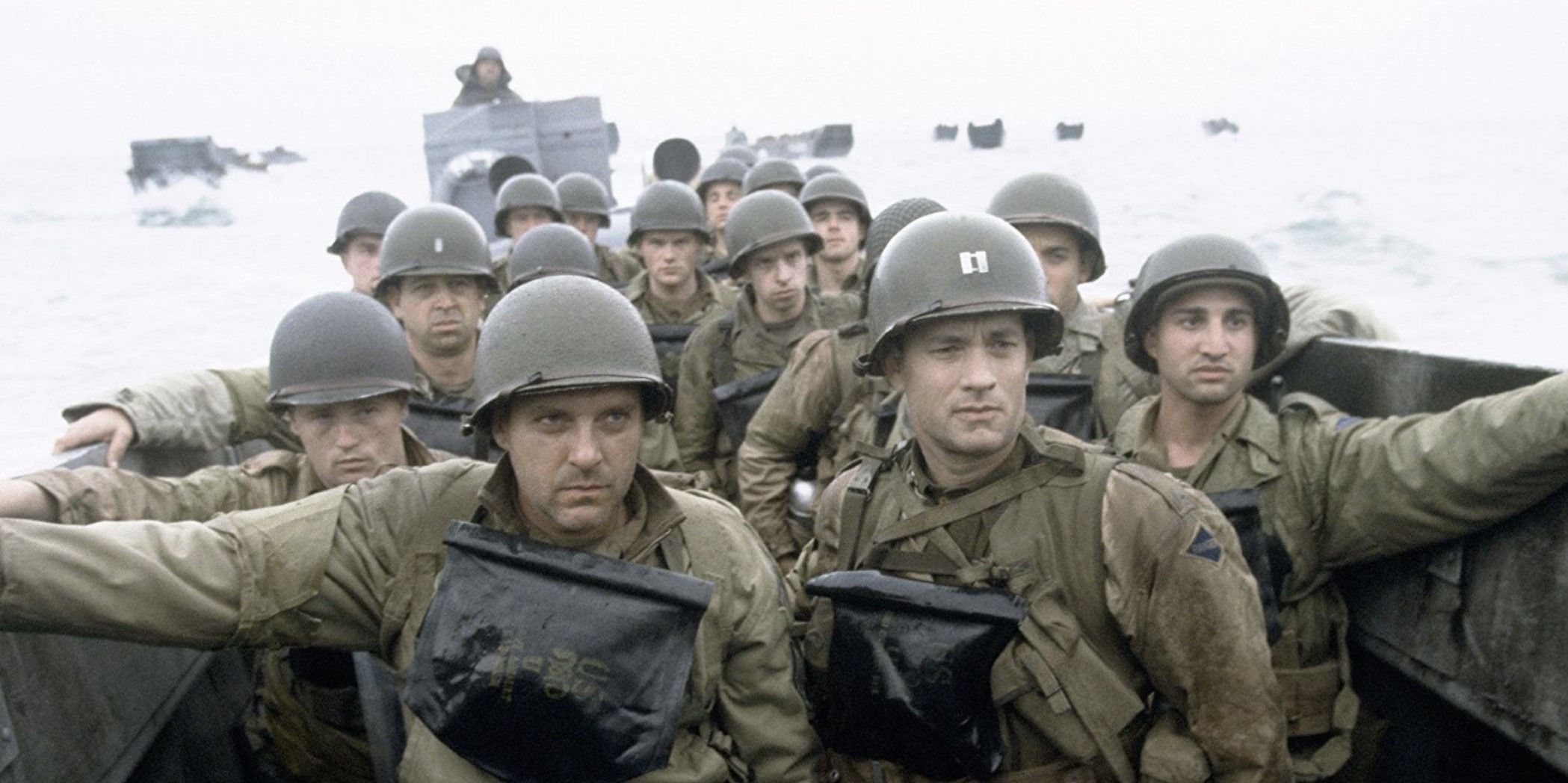Saving Private Ryan introduces Tom Hanks’ character, Captain John H. Miller, with a close-up of his hands shaking uncontrollably en route to the beaches of Normandy. Miller’s hands continue to shake at different points throughout the film without any explanation. Today, the medical condition known as post-traumatic stress disorder (PTSD) immediately comes to mind for soldiers exhibiting similar symptoms. Are Miller’s shakes stress-related, or could he be suffering from something else entirely?
Steven Spielberg’s 1998 war epic famously opens with a brutally realistic recreation of the Allied landings on D-Day. Captain Miller and the 2nd Ranger Battalion are introduced as they head to Omaha Beach, where Miller’s hands shake for the first time on screen. The ensuing battle establishes Miller’s ability to regain his composure amidst the horrors of war while many around him lose theirs. This, no doubt, is why he is the captain. It's also why his uncontrollable shaking poses a serious risk to both his rank and the men under his command.
Captain Miller keeps his unsteady hands a secret from his men, who know very little about their captain throughout Saving Private Ryan. The only exception is Technical Sergeant Mike Horvath, a close friend of Miller’s who notices the involuntary shaking. It comes and goes, but the shaking began for some unknown reason in Portsmouth, England prior to embarking on the Allied invasion of Normandy, a fact Miller confides to Horvath in the relative safety of a Chapel one calm night. Horvath responds, “You may have to get yourself a new line of work. This one doesn’t seem to agree with you anymore.” The terrifying experiences of war can have a lasting effect on a soldier’s psyche, something widely known for centuries as either combat fatigue, war neurosis, or shell shock. It wasn’t until recently that the study of such effects has lead to a new classification of stress disorders, from which Miller most likely suffers.
In the midst of a mentally or physically terrifying experience, the human body responds via a physiological reaction that triggers the release of hormones, such as adrenaline, that fill the body with energy. Commonly known as the “flight-or-fight” response, this can lead to neurogenic tremors that help reduce overactivity in the body’s stress response system. This is a common reaction to the stresses of combat, but soldiers with PTSD continue to produce high amounts of these hormones even once the life-threatening situation has ended, which could explain Tom Hanks’s hands shaking in times of relative calm. This hormonal imbalance is a possible cause of the uncontrollable shaking through which PTSD can reveal itself. Suppressing these emotions can make matter’s worse, something Miller, as a captain, is expected to do in the presence of his men.
Yet Miller’s facial masking, apparent loss of strategic thinking, altered view of risk-taking, and other social behaviors have led many to theorize Miller suffers from Young Onset Parkinson’s disease, instead. This is unlikely considering a diagnosis at Miller’s age (early 30s) is rare, but it may be a logical conclusion if not for the fact Miller is fighting the deadliest war in human history. Since Miller’s symptoms begin prior to D-Day, it may appear the PTSD diagnosis is incorrect. However, Miller had already seen combat prior to the movie. Moreover, Horvath’s reaction in the Chapel seems to support the theory that Miller’s shaking is combat-based.
Saving Private Ryan is consistently cited as one of the more realistic depictions of all war movies, thus it's no surprise the characters themselves suffer real-life consequences of combat. Though little context is provided, it’s reasonable to assume Captain John H. Miller’s uncontrollably shaking hands is a result of post-traumatic stress disorder thanks to the film's dialogue and what is known of PTSD today. Only those who have braved the sting of battle can fully understand the psychological effects of war, but anyone who has seen Saving Private Ryan’s D-Day scene won’t find it hard to believe Miller’s symptoms are just that.


